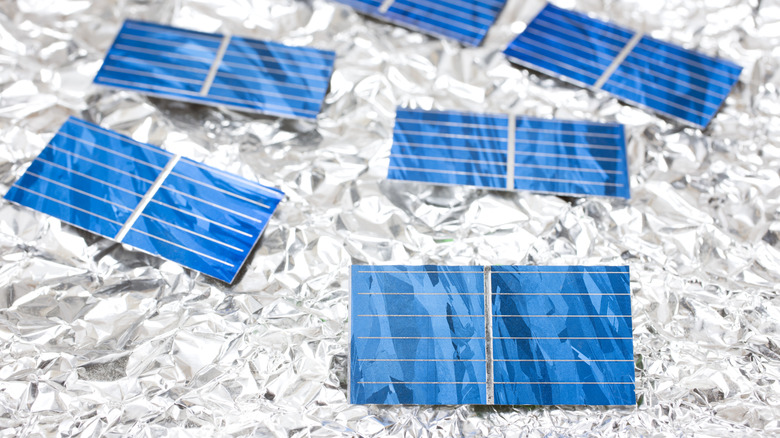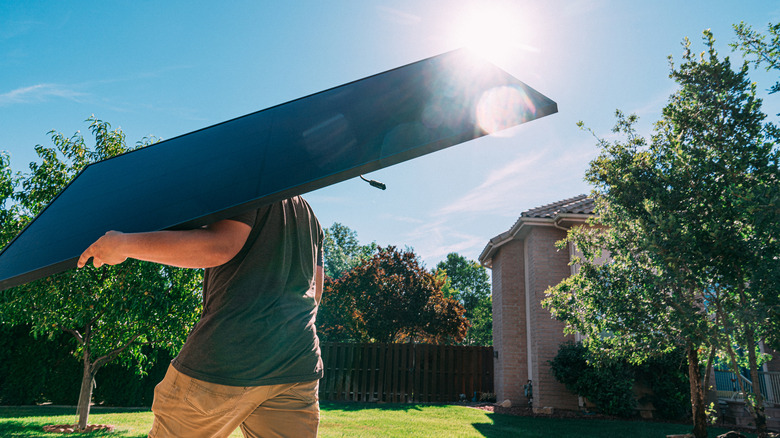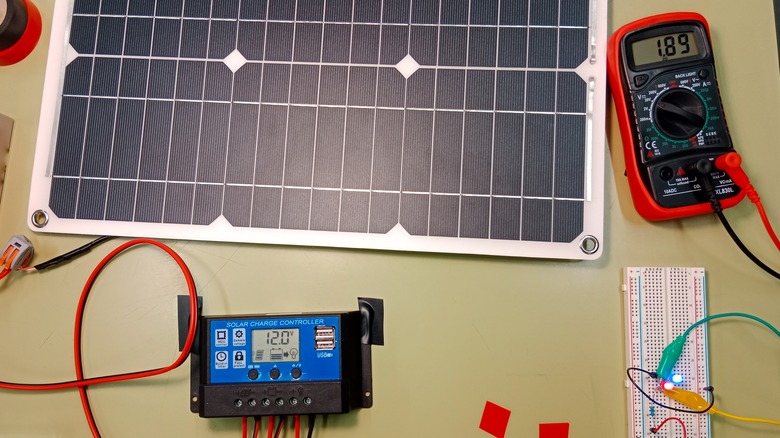Using Aluminum Foil To DIY A Solar Panel: Smart Idea Or Waste Of Time?
With solar panels that convert sunlight into electricity, a home can reduce its reliance on fossil fuels and gain more independence in generating its power, leading to lower utility bills and better environmental impact. Adding solar panels to a home can also increase its value. However, they come at a high initial cost, which causes some people to hesitate and consider other options. DIY solar panels using aluminum foil are a common alternative. They work and are fairly easy to put together, but we recommend constructing them properly and keeping them for simple use only.
Solar energy offers an eco-friendly and cost-effective solution for powering homes. It is a renewable energy source that has various benefits for ecosystems and the environment at large, per the U.S. Office of Energy Efficiency & Renewable Energy, so it's good to make use of it when possible. That's part of the excitement of being able to DIY panels using a simple home essential like foil. It's important to note, however, that they can't replace traditional panels and work best in certain circumstances.
Making and using a DIY solar panel to maximize efficiency
To make a solar panel, you glue some solar cells and strips of aluminum foil on a cardboard base and cover the structure in a clear sheet to prevent disturbance by the elements. The cells are the main part of this because they generate the energy, while the foil is there to reflect sunlight so the cells can get more of it. There are some techniques out there that leave out the solar cells and require a layering of plywood, glass, and then foil. However, solar panels of all types work because the cells create an electric current when they are exposed to sunlight, so the method with the cells will always be better.
To maximize efficiency when making a DIY panel, ensure you have a very reflective foil type and connect the cells in series for higher voltage or parallel for higher current, based on what you need the most. Also, place it outside in a good area like the roof or yard, and angle it in the best way possible to receive the sunlight.
A smarter DIY option
Overall, a DIY solar panel made with foil isn't a fully reliable method, and you're better off with commercial solar panels. It can't be used to power a home or a room, but it can be used for small devices and appliances in some instances. For example, people recommend using it to charge power banks and batteries instead of using it on phones directly. For something stronger and more reliable, though, we suggest looking into commercial solar panel kits designed for DIYers. They act as a middle ground between traditional panels and those made from scratch. You can pay less, set them up yourself, feel more secure in them, and use them for bigger things because they come in different forms.
The more complex products cost thousands of dollars, but you can find simpler ones. The Renogy 100 Watt 12 Volt starter kit with a 20A MPPT Charge Controller (for more efficient energy transfer) costs $239. The even simpler AOSHIKE mini solar panels, which come in a pack of ten, cost $16 on Amazon. If you're looking to build multiple things and need power, they are good for that. Whatever kit you buy or online guide you follow, stick to the safety guidelines and exercise caution, and if you're trying to hook things up with your main electric system, consider calling a pro because electrical work is risky.


